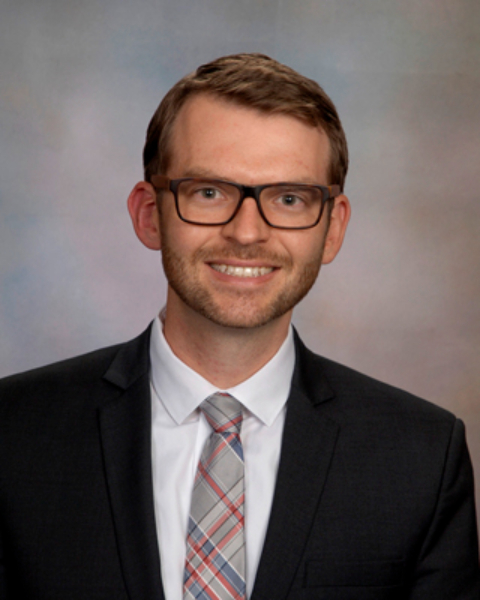Back
PQA 01 - PQA 01 Lung Cancer/Thoracic Malignancies and Diversity, Equity and Inclusion in Healthcare Poster Q&A
2033 - Development and Implementation of a Diversity, Equity and Inclusion Task Force in a Radiation Oncology Department at an NCI-Designated Comprehensive Cancer Center
Sunday, September 29, 2024
2:45 PM – 4:15 PM ET
Location: Hall C
Screen: 4

Jason Domogauer, MD, PhD
NYU Langone Laura and Isaac Perlmutter Cancer Center
New York, NY, United States
Presenter(s)
J. D. Domogauer1, B. A. Barry2, A. McCarthy3, K. S. Osterman4, and A. C. Kimmelman5; 1NYU Langone Health, New York, NY, 2New York University Cancer Center, New York, NY, United States, 3Department of Radiation Oncology, NYU Langone Health and Perlmutter Cancer Center, New York, NY, 4Department of Radiation Oncology, NYU Langone Health, New York, NY, 5Brigham and Womens Hospital, Boston, MA
Purpose/Objective(s): Diversity, equity, and inclusion (DEI) initiatives are essential to foster a positive workplace culture by ensuring that everyone has the opportunity to contribute to and benefit from quality and compassionate cancer care. Further, attention to DEI within healthcare is critical to identify opportunities to reduce health care disparities, improve patient outcomes, expand research inclusion, and enhance medical education. Towards this end, a DEI Task Force (TF) was developed within the Department of Radiation Oncology at an NCI-Designated Comprehensive Cancer Center to help identify, support and champion the department’s DEI initiatives. Materials/
Methods: In alignment with the organization’s overarching DEI goals, the department’s Director of DEI developed and disseminated a data collection web application survey to department trainees, faculty, and staff via a departmental listserv to gauge interest in being involved in a DEI TF, as well as to identify topics of interest in three pre-defined sub-categories: 1) Research, 2) Patient Education and Quality Improvement (QI), 3) Student/Trainee and Community Outreach. Additionally, the survey contained open-ended questions for respondents to share DEI initiative ideas. Two additional reminder emails were sent two weeks apart per the Dillman method. Principles of community-based participatory research and community advisory board development were threaded throughout design and implementation of the DEI Task Force and identification of DEI topics for the department.
Results: A total of 28 unique responses were obtained out of 208 department members (13.5% response rate). Respondent roles were nearly equally distributed amongst physicians, physicists, radiation therapists, dosimetrists, nursing, and administration/operations. An interest in DEI-focused research was the highest among the three pre-defined sub-categories (88% of respondents), while 76% expressed an interest in patient education and QI and 56% were interested in student/trainee and community outreach. To date, five monthly meetings of the TF have been completed which have utilized consensus building to structure the organization of the DEI TF and construct a mission statement. Utilization of thematic coding was used to review the open-ended responses from the survey, which identified the following focus areas: 1) Optimize access to workflows and patient education for those who are non-English speaking, neuro-divergent, or have diverse physical and sensory abilities, 2) Expanded community outreach to local high schools to promote access to health care careers, Development of faculty / staff resource handbook.
Conclusion: This single-institution experience demonstrates departmental uptake in forming a DEI TF from members of diverse roles. Although response rate was low, those who did respond provided robust feedback and maintained engagement resulting in development of DEI focus areas and respective action plans.
Purpose/Objective(s): Diversity, equity, and inclusion (DEI) initiatives are essential to foster a positive workplace culture by ensuring that everyone has the opportunity to contribute to and benefit from quality and compassionate cancer care. Further, attention to DEI within healthcare is critical to identify opportunities to reduce health care disparities, improve patient outcomes, expand research inclusion, and enhance medical education. Towards this end, a DEI Task Force (TF) was developed within the Department of Radiation Oncology at an NCI-Designated Comprehensive Cancer Center to help identify, support and champion the department’s DEI initiatives. Materials/
Methods: In alignment with the organization’s overarching DEI goals, the department’s Director of DEI developed and disseminated a data collection web application survey to department trainees, faculty, and staff via a departmental listserv to gauge interest in being involved in a DEI TF, as well as to identify topics of interest in three pre-defined sub-categories: 1) Research, 2) Patient Education and Quality Improvement (QI), 3) Student/Trainee and Community Outreach. Additionally, the survey contained open-ended questions for respondents to share DEI initiative ideas. Two additional reminder emails were sent two weeks apart per the Dillman method. Principles of community-based participatory research and community advisory board development were threaded throughout design and implementation of the DEI Task Force and identification of DEI topics for the department.
Results: A total of 28 unique responses were obtained out of 208 department members (13.5% response rate). Respondent roles were nearly equally distributed amongst physicians, physicists, radiation therapists, dosimetrists, nursing, and administration/operations. An interest in DEI-focused research was the highest among the three pre-defined sub-categories (88% of respondents), while 76% expressed an interest in patient education and QI and 56% were interested in student/trainee and community outreach. To date, five monthly meetings of the TF have been completed which have utilized consensus building to structure the organization of the DEI TF and construct a mission statement. Utilization of thematic coding was used to review the open-ended responses from the survey, which identified the following focus areas: 1) Optimize access to workflows and patient education for those who are non-English speaking, neuro-divergent, or have diverse physical and sensory abilities, 2) Expanded community outreach to local high schools to promote access to health care careers, Development of faculty / staff resource handbook.
Conclusion: This single-institution experience demonstrates departmental uptake in forming a DEI TF from members of diverse roles. Although response rate was low, those who did respond provided robust feedback and maintained engagement resulting in development of DEI focus areas and respective action plans.
